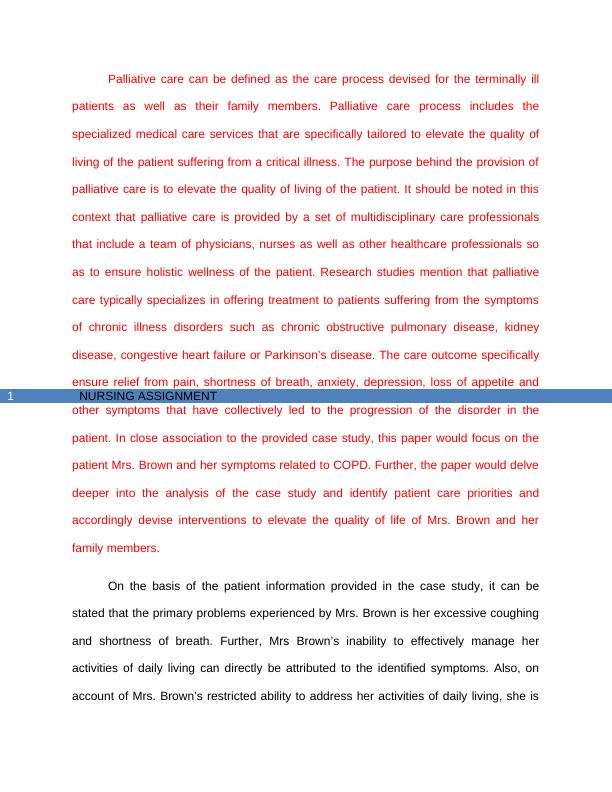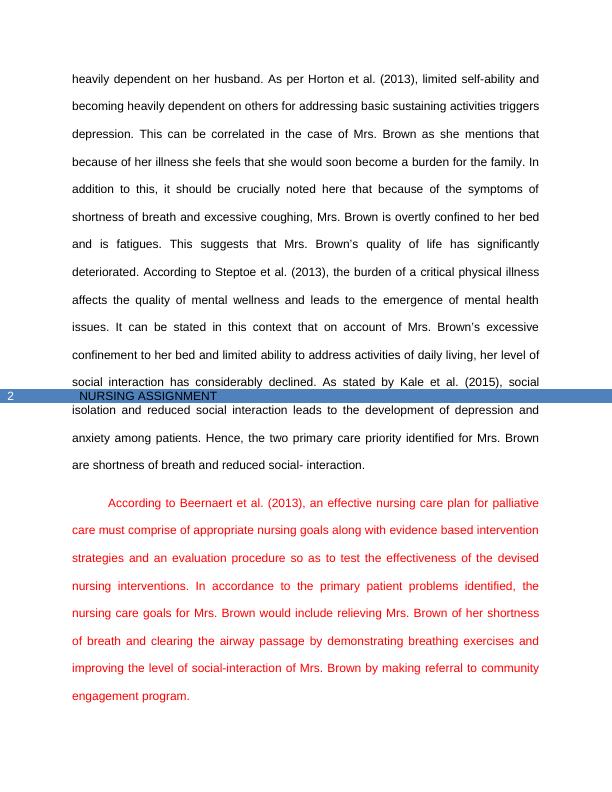Palliative Care for COPD Patients: Nursing Assignment
Discuss two high priority nursing strategies to manage Mrs. Brown using a palliative approach and provide evidence to justify these strategies.
8 Pages2003 Words406 Views
Added on 2022-11-30
About This Document
This nursing assignment focuses on the case study of Mrs. Brown, a COPD patient, and discusses the care priorities and interventions to improve her quality of life. It explores the symptoms of shortness of breath and social isolation, and proposes interventions such as breathing exercises and community engagement programs.
Palliative Care for COPD Patients: Nursing Assignment
Discuss two high priority nursing strategies to manage Mrs. Brown using a palliative approach and provide evidence to justify these strategies.
Added on 2022-11-30
ShareRelated Documents
End of preview
Want to access all the pages? Upload your documents or become a member.
Nursing Assignment: Palliative Care Approach and Care Priorities
|6
|1771
|40
Palliative Care: Nursing Priorities and Interventions
|7
|1806
|71
Nursing Assignment: Palliative Care and Nursing Interventions
|6
|1748
|27
Palliative Care for COPD and Depression
|8
|2128
|34
Palliative Care for Mrs. Brown: Nursing Priorities in COPD
|7
|1773
|28
Nursing | Assignment Sample
|6
|1640
|218



